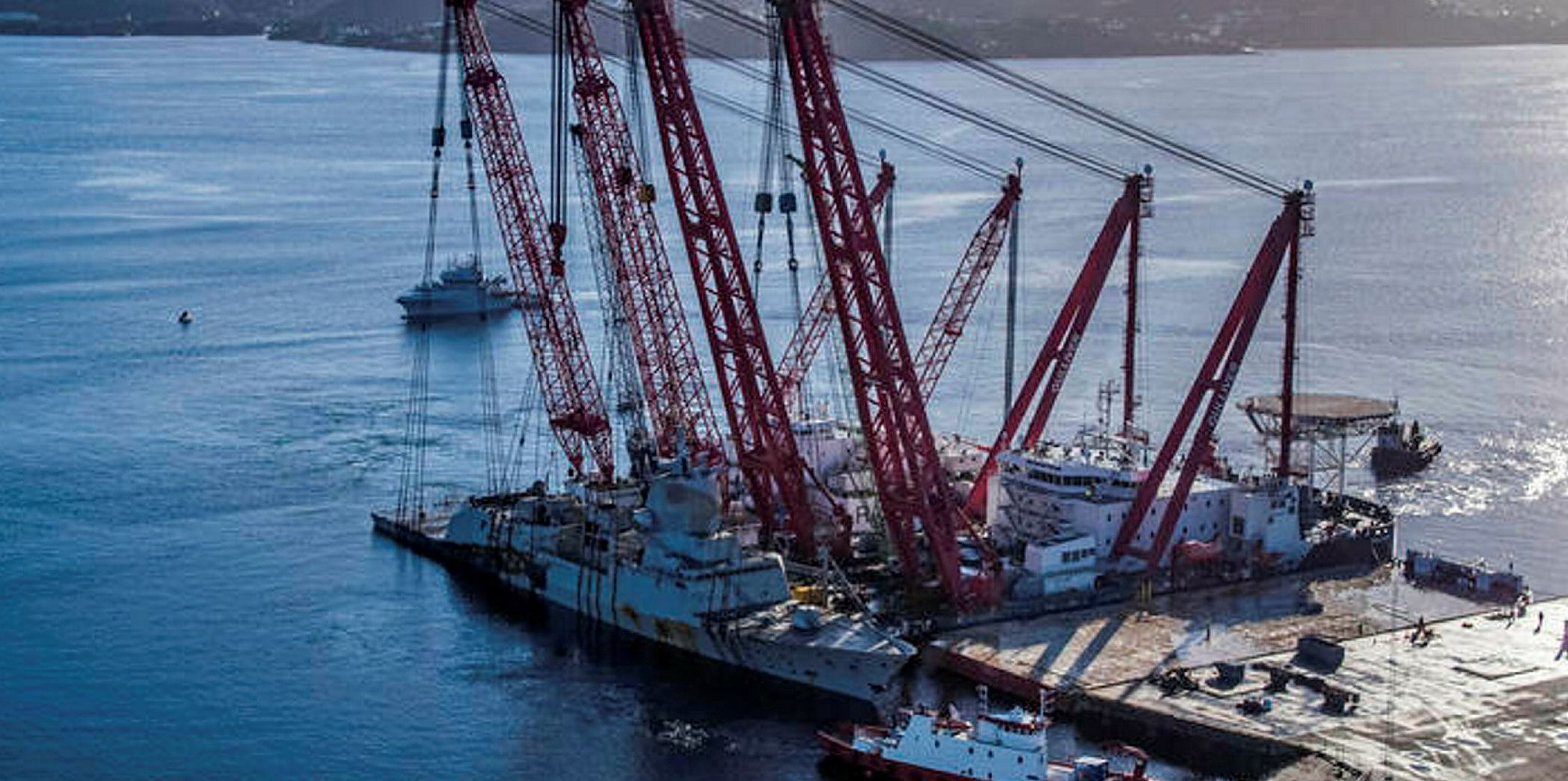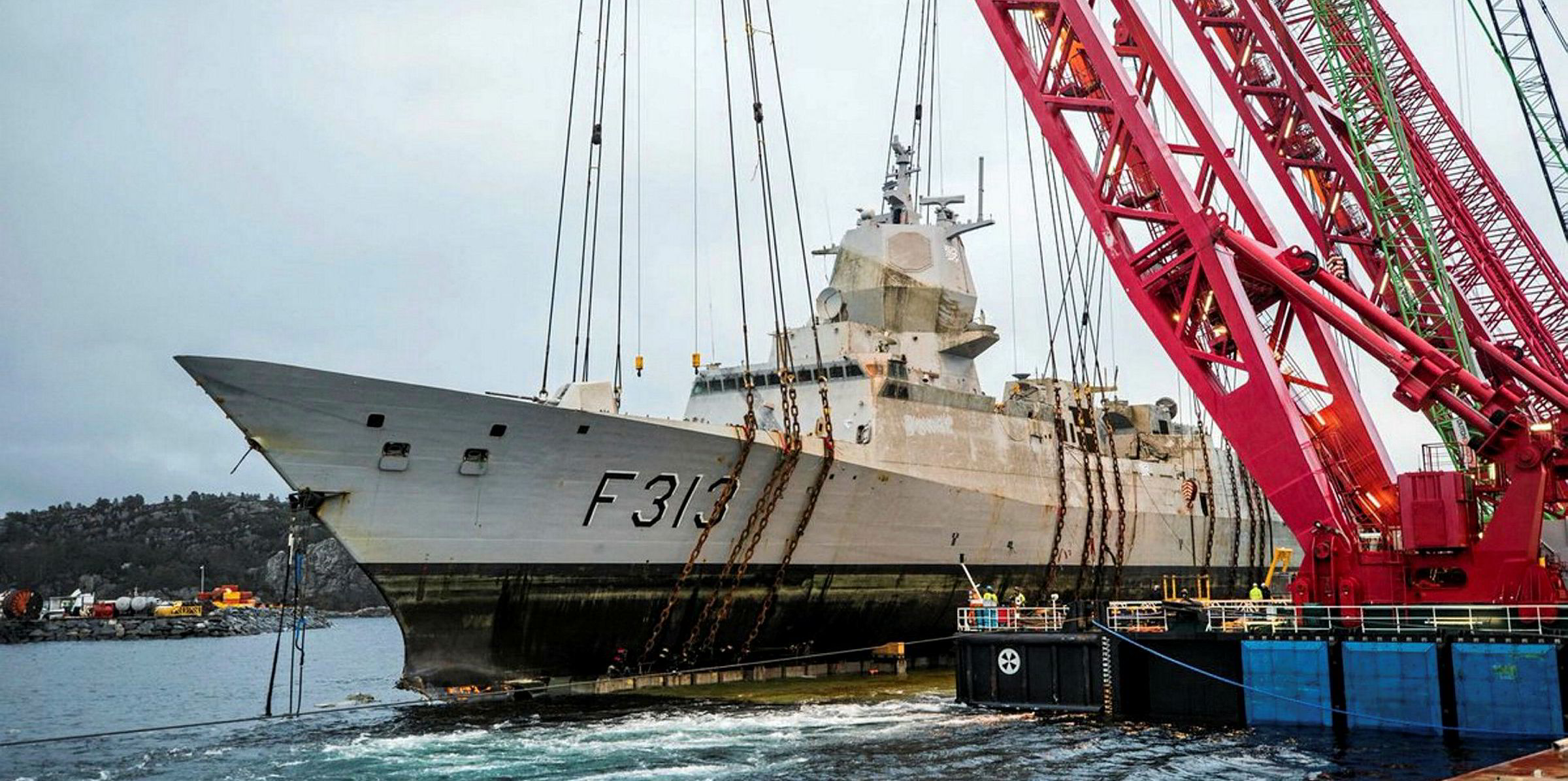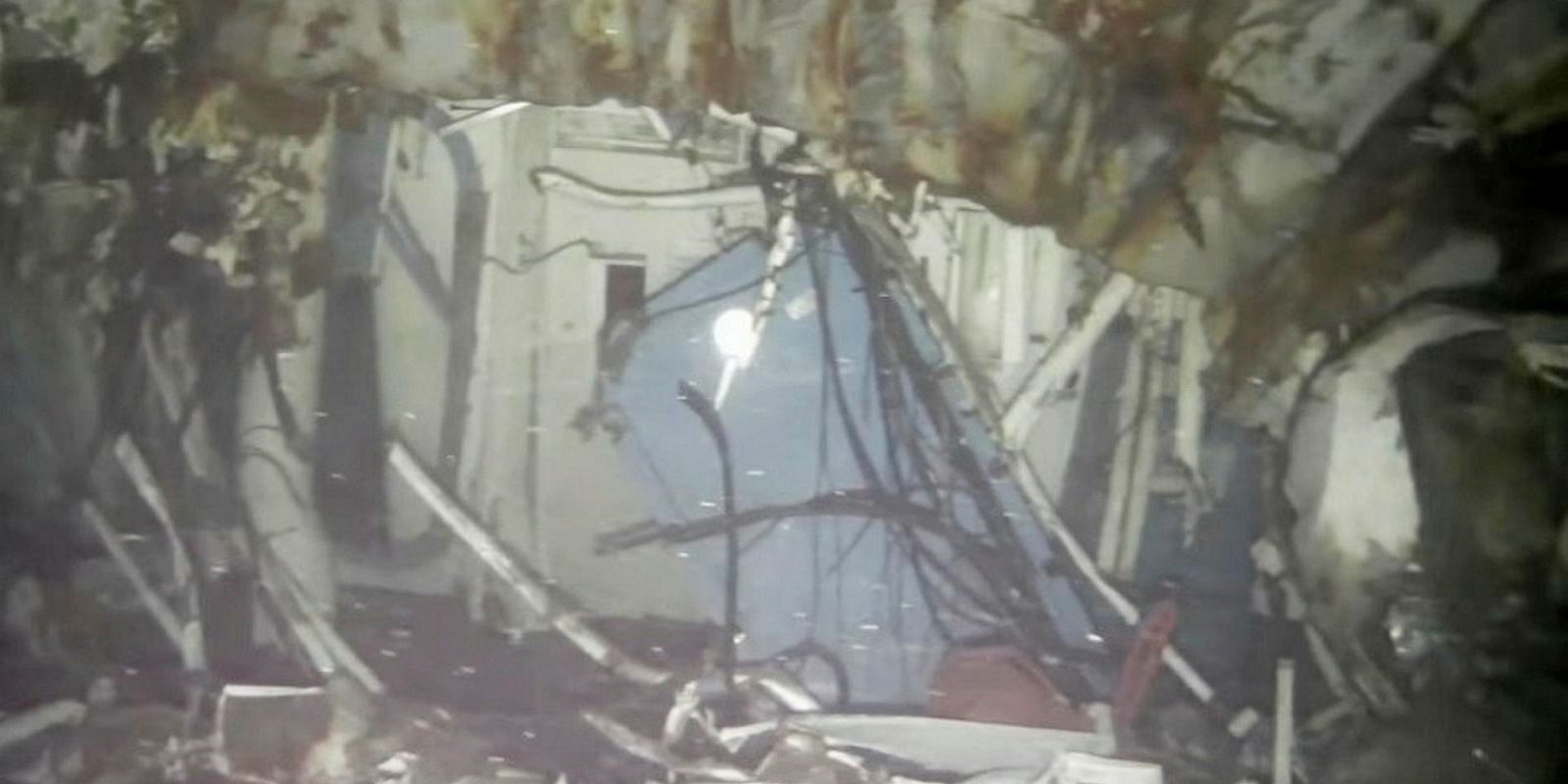Jan De Nul has successfully completed the salvage of a Norwegian frigate that sank off Bergen late last year.
Belgian subsidiary Scaldis carried out the operation to raise the KNM Helge Ingstad together with Norwegian company BOA Offshore.
The company is said to have developed a “revolutionary lift method” especially for the project, by combining its two heavy lift vessels Rambiz and Gulliver.
The Rambiz, equipped with two cranes, has a total lifting capacity of 3,300t, while the new heavy lift vessel Gulliver, also with two cranes has capacity of 4,000t.
With this combined total lifting capacity of 7,300t it was possible to lift the 133-metre long and 5,500-tonne heavy frigate in one piece.
“In fact, the synchronous functioning of the four cranes allows to lift the wreck in one continuous operation and to move it into a horizontal position,” Jan De Nul said.
Missiles and fuel were removed from the frigate during the winter months while divers installed 16 hoisting chains under the wreck to be able to lift the ship out of the water.

“To lift the frigate completely out of the water, it was transported while hanging from the crane hooks of the heavy lift vessels to the nearest port, where it was placed on a submersible pontoon,” Jan De Nul said.
“This partially submerged pontoon was subsequently de-ballasted, allowing it to re-emerge above the waterline while supporting the Helge Ingstad at its centre.
“During this operation, the hoisting cranes stabilised the ship until all sea-fastenings had been secured for subsequent transport.”
The KNM Helge Ingstad sank on 8 November after colliding with the Tsakos Energy Navigation’s 113,000-dwt aframax TS Sola (built 2013).
The crew of the sunken warship did not realise they were headed toward the moving tanker until it was too late, a preliminary investigation of the collision found.
The Accident Investigation Board Norway said the crew of the state-of-the-art naval ship thought the tanker was stationary until the two ships were within 400 metres of each other.




